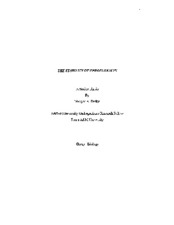| dc.contributor.advisor | Boothe, Dawn | |
| dc.creator | Dodge, Meagan A. | |
| dc.date.accessioned | 2013-02-22T20:39:42Z | |
| dc.date.available | 2013-02-22T20:39:42Z | |
| dc.date.issued | 1998 | |
| dc.identifier.uri | https://hdl.handle.net/1969.1/ETD-TAMU-1998-Fellows-Thesis-D64 | |
| dc.description | Digitized from print original stored in HDR. Due to the character of the original source materials and the nature of batch digitization, quality control issues may be present in this document. Please report any quality issues you encounter to digital@library.tamu.edu, referencing the URI of the item. | en |
| dc.description | Includes bibliographical references. | en |
| dc.description | Program year: 1997/1998 | en |
| dc.description.abstract | Enrofloxacin is an antimicrobial drug approved for veterinary use only. Enrofloxacin is administered orally or parenterally. Veterinarians may dilute the drug for injection or topical use in a commercial physiological solution. The injectable commercially used Enrofloxacin, Baytril, is sometimes too strong, causing vomiting, and much smaller concentrations are effective topically. It is hypothesized that the dilution of enrofloxacin in some commercially used solutions will not affect the drug's efficacy. The purpose of my study was to test the afore stated hypothesis. In the experiment, stock solutions of enrofloxacin in physiological saline solution, dextrose 5% in water, lactated Ringer's solution, Epi-otic solution, and vinegar. E. coli 2592-2 (standardized solution in saline) was the microorganism chosen to be tested because it is known to be susceptible to enrofloxacin. At time 0, 1 day and 7 days and temperatures of 25°C and 4°C, decreasing tube dilutions (0.125 to 16 μg/ml) of each stock solution and a standard enrofloxacin solution (control) were made using Mueller-Hinton broth. Each dilution of the enrofloxacin solution and an equal amount of bacterial solution were combined and incubated for 24 hours. The resulting growth was read using ultraviolet spectrophotometry and the minimum inhibitory concentration (MIC) of enrofloxacin in each solution was determined and compared to the control. Results showed that the MIC's at time were: control - 8 μg/ml, saline - 0.25 μg/ml, dextrose - 4 μg/ml, ringer - 1 μg/ml, epi-otic - 4 μg/ml, and vinegar - 2 μg/ml. The results for both temperatures at 1 day followed the same pattern. At 7 days, crystals of enrofloxacin were observed in all solutions at both temperatures, hence these solutions were not tested by tube dilution. Therefore, it can be concluded that because the commercial solutions caused a decrease in MIC, they all appear to increase rather than decrease the efficacy of enrofloxacin. The experiment shows that some physiological solutions can alter the efficacy of enrofloxacin when the two are combined for clinical use, but this alteration is favorable. | en |
| dc.format.extent | 14 pages | en |
| dc.format.medium | electronic | en |
| dc.format.mimetype | application/pdf | |
| dc.language.iso | en_US | |
| dc.rights | This thesis was part of a retrospective digitization project authorized by the Texas A&M University Libraries in 2008. Copyright remains vested with the author(s). It is the user's responsibility to secure permission from the copyright holder(s) for re-use of the work beyond the provision of Fair Use. | en |
| dc.subject | Enrofloxacin | en |
| dc.subject | dilution | en |
| dc.subject | efficacy | en |
| dc.subject | minimum inhibitory concentration | en |
| dc.title | The stability of enrofloxacin | en |
| dc.type | Thesis | en |
| thesis.degree.department | Veterinary Clinical Pharmacology | en |
| thesis.degree.grantor | University Undergraduate Research Fellow | en |
| thesis.degree.name | Fellows Thesis | en |
| thesis.degree.level | Undergraduate | en |
| dc.type.material | text | en |
| dc.format.digitalOrigin | reformatted digital | en |


